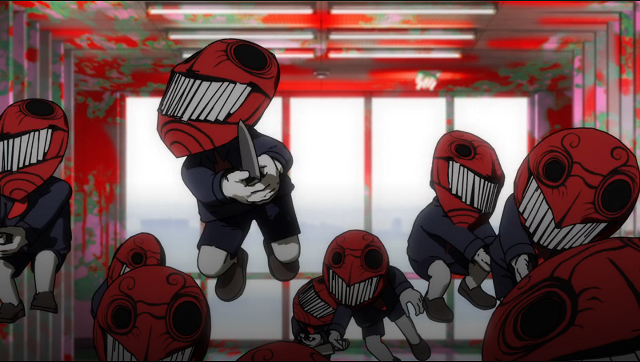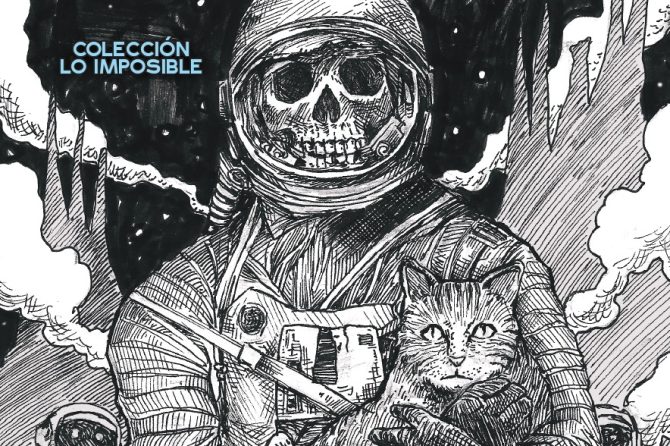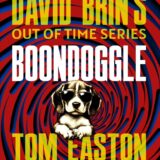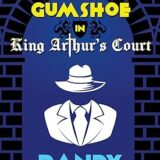
OBIR: Occasional Biased and Ignorant Reviews reflecting this reader’s opinion.

Starlost Unauthorized and the Quest for Canadian Identity – by D.G. Valdron
Publisher: Fossil Cove Press, Winnipeg, Manitoba, Canada, October 2024.
Cover Art – photo by Hubble Telescope, NASA.
Premise:
Though an American-designed TV show whose primary target was the American audience, the infamous “The Starlost” TV series was so thoroughly Canadian in its themes, mood and sensibilities (as a reflection of Canada’s cultural war against US influence) that it proved incomprehensible to Americans, including those who created it in the first place.
Review:
Say what? WTF? Wasn’t it just an el-cheapo piece of crap that flopped because it was so incredibly bad?
Well, yeah, but only because it was betrayed by the Americans that attracted investors in the first place, namely Harlan Ellison and special effects wizard Douglas Trumbull. That it wound up being produced by the fledgling Canadian TV network CTV was purely the result of a Hollywood writers strike. CTV signed on because it was promised superb scripts (with Harlan writing the first and riding herd over all subsequent scripts) and a time-saving, money-saving Magicam special effects system perfected by Trumbull. Consequently, the resulting high-quality SF TV series, because of the limited studio space required and super-efficient low costs, was sure to be a gold mine for CTV and the American backers. Except it didn’t turn out that way.
Harlan was a certified genius as a writer. All you had to do was ask him. And, annoying though his ego was, he was correct. He was a terrific writer. But as a script writer he had one fatal flaw, an inability to comprehend the constraints imposed by available production resources. To be fair, he first composed a “bible” or guide for potential scriptwriters for “The Starlost” series so they would know what was canon and not go too far astray. Though apparently a bit vague in overall concept, not all implications fully worked out, it provided underlying concepts for some of the episodes later filmed. So far, so good.
But he delivered the script for the first episode way behind schedule, less than a month before production was to begin. It was unfilmable. No way could it be done within the designated budget. Granted, a revised version later won an American Screenwriters award. Evidently it was a great script, albeit one totally unsuited to the task at hand. Canadian writer Norman Klenman was brought in to whittle the script down to something doable. Even so, it ran over budget by 50%. Meanwhile, Harlan bailed and contributed nothing further. The series was off to a very bad start.
Even worse, the entire budget and studio facilities were predicated on Trumball’s wonderfully inexpensive Magicam system. Essentially, two video cameras were slaved to each other, duplicating each other’s moves exactly, compositing in real time while simultaneously moving and recording actors in front of a blue screen and a view of a miniature set. This would allow virtually all interior shots aboard the “Ark” to consist of said miniatures. To visualize the intended effect, remember the wonderful CGI work in the 2004 film “Sky Captain and the World of Tomorrow.” This is roughly what the investors in this 1973 TV series were promised. Inexpensive but wonderfully sense-of-wonder special effects. State of the art. Ground-breaking.
Only one problem. It didn’t work. Well, it sort of did, but out of sync, the two cameras were finicky in their cooperation and it took take after take to get it right. Just one shot in the first episode required 21 hours to complete satisfactorily. Time is money. At that rate the entire budget for the series would run out in just a few episodes. And the production schedule, locked into a tight commitment for airtime, would be impossible to meet. So Magicam was abandoned and Trumbull bailed.
The result was the majority of sets had to be built in real scale for any filming to take place at all. There was literally no budget on hand for this purpose. The money had to be taken from other aspects of production. Not a decent solution. “The Starlost” is infamous for it’s painted plywood sets. Or as series star Keir Dullea once commented, “A thousand spray-painted Javex bottles do not a set make.” Yeah, essentially a lot of garbage was utilized. Plus cheap household furniture. Not quite sense-of-wonder visuals.
With the exception of American author Ben Bova as a “science consultant,” the TV series was entirely run and produced by Canadians. Is this why the series flopped? Because Canadian talent sucks? Not exactly.
Because Harlan buggered off (he was supposed to select and guide the scriptwriters but gave up after only a couple of weeks of wasted effort) and Magicam failed, and there being no adequate money, studio space, resources or time to compensate for these disasters, production ran in panic mode. Everything was NOT carefully planned but instead conjured up in an ad hoc manner. For an analogy, consider the careful, detailed and skillful work of the painter Rembrandt. Was “The Starlost” created in his manner? No. Remember the name of the artist who flung buckets of paint against his canvas and called the result art? Me neither, but it compares closely with the desperate methods employed by the harried staff at CTV.
Here’s the thing. American television was able to draw upon traditions and experience from a good half century or more of the Hollywood Dream Factory. There were literally thousands of highly skilled technicians available in everything from sound recording to set lighting. Whereas, even in 1973, Canadian television was starting from scratch. There was NO Canadian movie tradition. None. A few, rare, sporadic efforts had led to nothing. This was all due to Hollywood efforts to sabotage any nascent film industry in Canada.
Pierre Burton wrote an entire book about the sabotage, titled “Hollywood’s Canada: The Americanization of our National Image.” I used to own a copy, but it was such a depressing read I eventually threw it in the garbage. Must admit I wish I had it on hand because its contents are relevant to this review. One item which stuck in my memory is Hollywood lobbyists promising the Canadian Federal government that if they didn’t spend tax dollars on developing a film industry, Hollywood would stick mentions of Canada in dozens of movies (along the lines of “Hey, where you been, Joe?” “I was out of town hunting moose up in Canada”) and that this would guarantee thousands of Americans flocking to vacation in Canada. Win/win for Canadian Federal bureaucrats, no need to spend any taxpayer’s money; a free ride for tourism. The ploy worked. I don’t think it increased tourism, but it helped keep the Canadian film industry stillborn.
Were there not talented Canadians eager to appear in movies? Sure, people like Raymond Massey, Barry Morse, Lorne Greene and William Shatner, who moved to Hollywood where movies were made. How did they get started? In the strong Canadian tradition of stage theatre. William Shatner, for instance, first stunned critics with superb performances in plays performed at the Stratford Festival in Ontario. That was as good a credibility-establishing “in” to Hollywood as a Broadway hit in New York city. Hard to believe, but once was true.
Anyway, the point is that Canadian television acquired “crew” from two sources: stage productions, and endless National Film Board documentaries on beavers, moose, wolverines, polar bears and other iconic Canadian critters. The result was a distinctive hybrid which screamed “Canadian TV production” at the viewer. I remember this phenomenon well. Almost every TV show was lit in a flat, uniform manner, and performed, in terms of direction and lack of camera movement, as if it were a theatre production that just happened to be recorded on film. At best one could hope for a bit of documentary feel with an accidental touch of film noir. Basically, visually boring. And since “Starlost” was done at a furious pace with no time for incremental adjustments to “improve” anything, the “Canadian style” drowned the production in staginess. Definitely no appeal for the American audience it was aimed at.
So, now you’re thinking, what is this book? An autopsy for a failure best forgotten? Why bother reading it? Well, for a Canadian like myself, this book is an exhilarating blast from the past, a precious glimpse of the Canada I grew up in. A veritable time machine!
Take my youthful interest in written science fiction. Was there such a thing as Canadian science fiction literature, or just a few Canadians writing for the American market? This question used to be asked all the time. There’s A.E. van Vogt, who wrote his best works while still living in Canada, then moved to the States, took up Dianetics, and became the unique and highly idiosyncratic writer he was born to be. But wasn’t he just feeding the American market? Can’t count his work as truly Canadian in spirit?
There were works by other Canadian authors, like Phyllis Gotlieb (“Sunburst” 1964), Margaret Laurence (“A Queen in Thebes” 1964), David H. Walker (“The Lord’s Pink Ocean” 1972), Jim Willer (“Paramind” 1973), and William C. Heine (“The Last Canadian” 1974), to name a few, but this was a time when the existence of a separate and distinct Canadian literature was being called into question, never mind an insignificant subgenre like SF. Our very existence as a nation was constantly being debated, in the press, in magazines, on TV shows, at universities, so great was the fear we were being subsumed by American culture. I remember. Believe me, I remember.
“Starlost,” having defaulted to an entirely Canadian production, was a source of great frustration for Ben Bova. No one had the time or money to follow his advice. He eventually wrote a fictionalized account of his experience, a novel titled “The Starcrossed: a 21st Century Ratings War!” which is an absolute delight to read. He dedicated it, “To Cordwainer Bird… may he fly high and strike terror in the hearts of the unjust.” This, of course, is Harlan Ellison’s pseudonym, his actual name having been removed from the TV show’s credits.
Ben Bova was aware something was going on. He once commented, “The thing that surprised me was that whenever I was called up for a problem there was a great deal of national chauvinism on the set. I was a Yankee. For the first time in my life, I heard phrases like “the flea knows how to live with the elephant.”
Gay Rowan, the Canadian actress who played the series female lead Rachael, later stated, “We all had this sense of Canadian pride that we were part of this big thing that was going on.”
Author D.G. Valdron describes the situation succinctly:
“Canada must have been a strange experience for Bova, akin to a story from Bradbury’s ‘Martian Chronicles’… He’d come to Canada, was surrounded by people who looked and sounded just like Americans… Despite being identical to Americans, they weren’t, they had attitude, this weird chip on their shoulders… They thought different, acted different, spoke different, had different preoccupations… Canadians were like Bradbury’s Martians, on the surface they were normal and completely familiar, but somewhere beneath, they were unpredictably alien.” And Ben Bova never understood why.
Valdron devotes the first 67 pages of this book to explaining why. It’s a beautiful summation of the desperate coming-of-age for Canada in the 1970s which belongs in every Canadian high school, at least in my humble opinion. Chapter headings such as “The Great Canadian Identity Crisis,” “Defining a National Identity,” “Creating a Cultural Identity,” “Starlost and the Canadian Sensibility,” “Culture and Identity” offer clues as to content.
Does this sound like something Americans would want to read? Or even Canadians? Sounds dry and boring? On the contrary, the crisis was genuine, dire, mindboggling, wonderfully interesting and often hilarious. Buried beneath our placid outer layer, Canada’s history consists of melodramatic shenanigans of the highest order which, properly exposed, are entertaining in the extreme. To those unfamiliar with the true nature of Canada (which, alas, includes many modern Canadians), this section of the book will blow your mind. It’s a trip. It’s well worth reading, especially if you know nothing about Canada. Highlight of the book, really.
To everyone who thinks I and this book are engaging in plate tectonics to make a gigantic mountain range out of the tiniest of molehills, let me quote one single fact from this section to illustrate what is being revealed.
“Of the two thousand films broadcast out of CBC [Canadian equivalent of the BBC] Toronto television station between 1967 and 1974, only two were Canadian.”
That’ll give you an idea of how close we were to going under as merely a market for movies produced outside our country.
Americans, ask yourselves, would you be willing to put up with movies available to you today being 99.99% foreign in origin and dealing entirely with plots set in other countries? I don’t think so. So, it should come as no surprise that the Canadian government took action in the 1970s and imposed quotas of Canadian content, tax incentives for Canadian producers, and assorted other measures to jumpstart a Canadian film industry.
Now, as to the success of “The Starlost” with Canadian TV viewers. Norman Klenman, who wrote six episodes in all and was involved throughout the entire series, commented, “The ratings in Canada were never a problem. [If] it had only been Canadian audiences, ‘The Starlost’ could have run indefinitely.”
Further proof, if any were needed, that Canadian sensibilities suffused the show to the point of pleasing Canadians.
Valdron argues that “many of the stories it told resonated to Canadian sensibilities in ways that were completely inscrutable if not outright repellant to American audiences…” and hence its failure in the American market. Downright “unamerican” as it were. Some episodes quite deliberately addressed Canadian views on political and economic matters, where others were essentially generic SF tales yet subliminally or unconsciously reflected the Canadian viewpoints of the authors. Canadians can’t help being Canadians, I guess.
We come to the meat of the text, about 200 pages devoted to an episode guide analysing each of the 16 episodes in exquisite detail, exploring everything from political implications to explications of why the non-existent budget wasn’t always a handicap, the flaws and virtues of fluctuating continuity, accidents on the set, actor’s personal anecdotes, and in general, a plethora of minutiae guaranteed to stuff your brain to bursting. All utterly fascinating and often highly amusing.
Needless to say, the purely Canadian aspects are emphasised. Some strike even me as bizarre. Apparently, censorship in North America was at it’s most extreme in Ontario in 1973. This is why love interest is at a bare minimum, sex treated as an abstract concept, and violence practically non-existent. The plots consist mostly of characters debating each other, with almost everyone, including the villains, being unable to make up their minds what to do. Very Canadian, actually. The very opposite of the impulsive Captain Kirk of “Star Trek” fame.
Yet, in retrospect, some highly controversial concepts were slipped in so sedately as to be scarcely noticed. Take episode three “The Goddess Calabra,” written by Canadian Martin Lager but based on a story by Ursula K. Le Guin. It takes place in an Ark Pod which has been inhabited exclusively by men for centuries.
As Valdron writes, “There’s one word that sums up ‘The Goddess Calabra,’and that’s ‘queer.’ Welcome to the Pleasure Dome. Any doubt about that is dismissed early on when John Colicos, titled ‘the Governor,’ reclines on his throne and is entertained by a group of dancing men. Yep, this is gay all right. It is unapologetically ahead of its time.”
Barry Morse plays the Governor’s rival, Shaliff, the High Priest of the pod’s inhabitants. In general, both actors portray their characters with great dignity and sensitivity, albeit with occasional outbursts of Caligula-like enthusiasm on the part of Colicos. There is poignant humour on occasion, and even more poignant instances of futility bordering on tragedy. Not a subject “Star Trek” would have gone anywhere near.
Or take Episode Eight, “Gallery of Fear,” in which an imprisoned AI called Magnus strives to be free. Kier Dullea’s character debates whether or not to release Magnus with Rachael, who argues it would be immoral to murder a sentient self-aware being even if it’s just a machine. All grey areas are explored. No such problem in Star Trek. Kirk destroyed any number of superior beings. It’s the gung-ho thing to do. Solves many a problem.
The above is just two minor examples of how different “The Starlost” was from the American popular media culture of the day. Some of the episodes tackle problems most Americans would never consider problems in the first place. So, to focus on these matters seems unjustifiably excessive, unless, of course, you happen to be Canadian.
I vaguely recall watching a couple of episodes when first broadcast. I was mostly interested in visuals and wasn’t impressed. The debate aspect didn’t excite me. I found what I saw boring.
Having read this book, now I’m excited. To be sure, some episodes, particularly the last three, when their budget disappeared entirely, are allegedly embarrassingly bad (which makes me want to see them), but a goodly number of them are apparently quite sophisticated and intelligent enough to appeal to an old phart like myself who has learned to appreciate concepts as well as eye candy.
I immediately checked amazon.ca to see if the series is available. Yes, on high quality DVD for a very reasonable price. The only catch is it is “temporarily out of stock.” I ordered it anyway. I am looking forward to it, believe me. Am prepared to wait as long as it takes.
CONCLUSION:
This book is a hoot to read. Even if the “Canadians on a rampage” aspect doesn’t appeal to you, all politics aside, this is the best source of information you’ll ever read on what the show (as opposed to the production controversy) was actually all about. If you are at all a science fiction media buff, you’ve GOT to have this book. It’s the definitive study.
But I warn you. Once you’ve read it, you’ll want to watch every episode. It may be possible to stream it from somewhere. Me, I’m happy as a pig in mud waiting for the high-quality DVD set to arrive. All because I read this book.
Buy it at: < Starlost Unauthorized >










